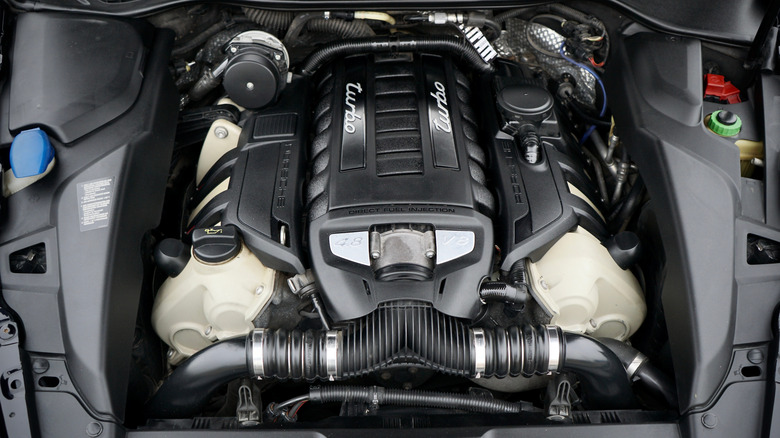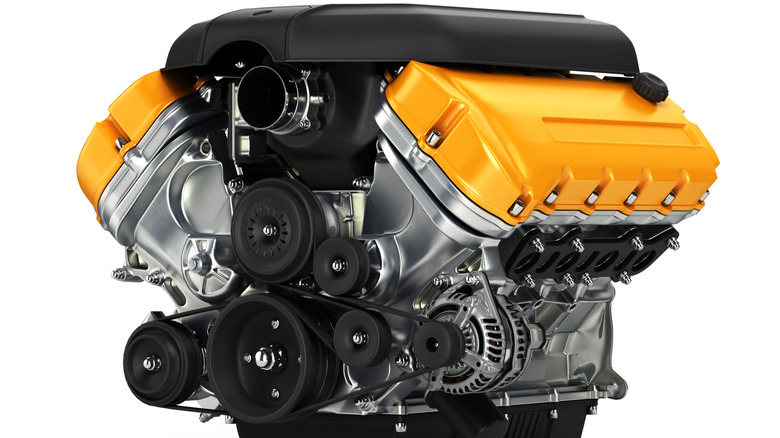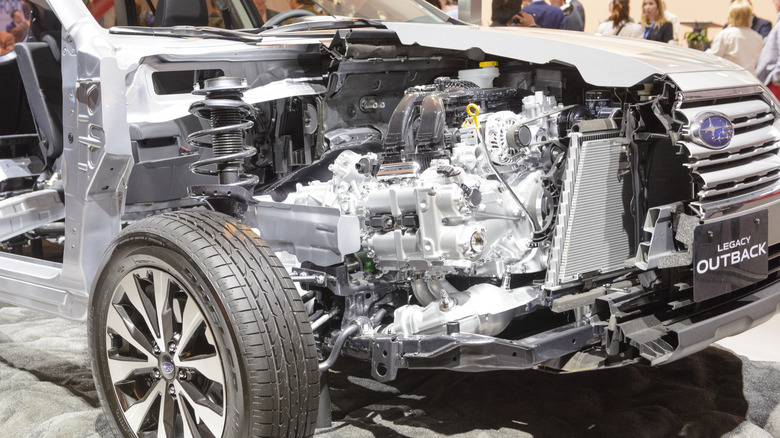Does The 'V' In V6 And V8 Mean Anything? A Look At How The Engine Type Got Its Name
There are people who will tell you that the roar of a V8 engine is one of the most beautiful sounds of all time — a point that's hard to argue with. The deep and thunderous growl of a powerful V8 engine when paired with an American muscle car is a match made in heaven. Yet, despite this association, the "V-configuration" engine has been with us for over a century. The original V8 engine was first developed in France by a brilliant engineer called Leon Levavasseur, who took out a patent on the design in 1902.
Initially, this type of engine was designed as a lightweight power source for the fledgling aviation industry and for racing boats. Rather than an American muscle car, the roar of a V8 was first heard in an aircraft dubbed the "L'Aeroplane de Villotran," and although the experimental craft was a failure, the engine proved to be a momentous success. From this unlikely beginning, a legend was born.
Where does the "V" part come in with V6 and V8 engines? Well, the clue is very much in the name. We'll also discuss how these engines differ from other designs, and why that matters.
The meaning behind the 'V' in V6 and V8 Engines
When referring to engines, the "V" defines the arrangement of the cylinders within the engine. More specifically, unlike inline engines — where the cylinders are laid out in a straight row — a V-engine splits them into two banks that form an angled or "V" shape. This type of design allows for a more compact design without compromising on power.
The easiest way to imagine this is to compare an inline eight-cylinder engine with a V8 engine. In an inline configuration, the length of an eight-cylinder engine would lead to some very strange and elongated car designs. Whereas, with a V8 engine, the engine is effectively half the length. Although V engines tend to be wider, it's still a lot easier for manufacturers to fit this shape into designs. In short, it's thanks to these characteristics that you don't have to squint over a hood that stretches off into the distance.
While the "V" in the engine name denotes the layout of the engine, the numeral part of the name represents the number of cylinders. Most common are the V6 and V8 engine designs, though V12s are also found in high-performance sports cars and luxury vehicles. Ultimately, there are no clever marketing techniques or even any great imagination used in the naming of this engine type. Rather, it's merely a pragmatic engineering term that just happened to give birth to one of the most emotionally charged sounds in motoring.
Other types: Inline and flat (Boxer) engines
While the "V" engine is still popular, they're far from the only engine configuration in use. Primarily, inline engines are one of the most commonly used engines in modern vehicles. The four-cylinder inline engine is the most popular iteration of this design. It is a simpler design than "V" engines with fewer moving parts, and is considered to offer better fuel efficiency. However, this doesn't mean to say that inline engines are boring options only suitable for run-of-the-mill cars. The Mercedes 3.0-liter M256 engine is a six-cylinder inline engine that dispels the boring myth. Depending on model specifics, this engine can produce anywhere between 362 and 429 horsepower.
The flat or boxer engine is not as common as the inline engine, but still warrants a mention. Commonly used in Subaru and Porsche models, flat engines are where the cylinders lie horizontally — or "flat" — and are arranged in two banks that oppose each other. One way to think about this is to consider a "V" engine that has been flattened out. Because of this design, this type of engine can lower the center of gravity in vehicles and improve handling. The reason that this design is often referred as a "Boxer" engine is because the horizontal movement of the pistons can be likened to two boxers throwing punches at each other.


